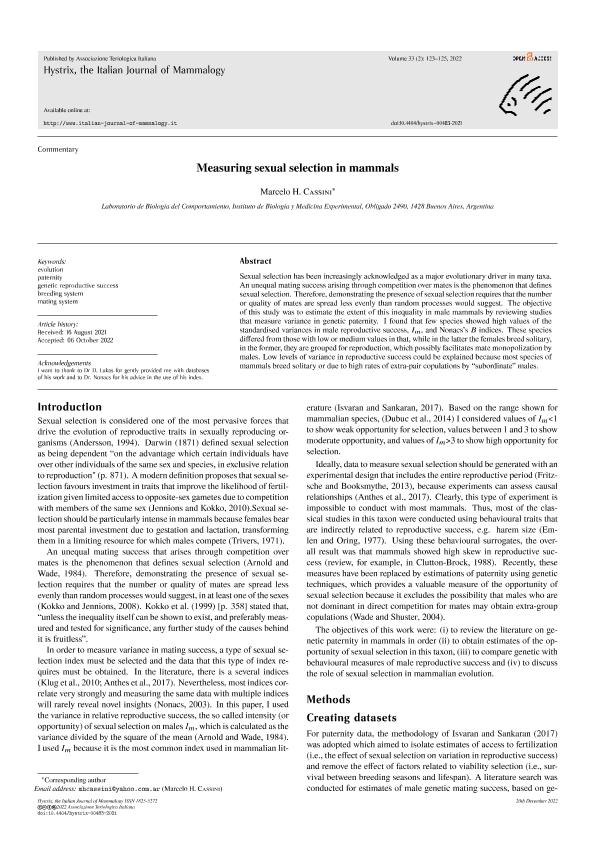Artículo
Measuring sexual selection in mammals
Fecha de publicación:
06/2022
Editorial:
Associazione Teriologica Italiana
Revista:
Hystrix
ISSN:
0394-1914
e-ISSN:
1825-5272
Idioma:
Inglés
Tipo de recurso:
Artículo publicado
Clasificación temática:
Resumen
Sexual selection has been increasingly acknowledged as a major evolutionary driver in many taxa. An unequal mating success arising through competition over mates is the phenomenon that defines sexual selection. Therefore, demonstrating the presence of sexual selection requires that the number or quality of mates are spread less evenly than random processes would suggest. The objective of this study was to estimate the extent of this inequality in male mammals by reviewing studies that measure variance in genetic paternity. I found that few species showed high values of the standardised variances in male reproductive success, Im, and Nonacs´s B indices. These species differed from those with low or medium values in that, while in the latter the females breed solitary, in the former, they are grouped for reproduction, which possibly facilitates mate monopolization by males. Low levels of variance in reproductive success could be explained because most species of mammals breed solitary or due to high rates of extra-pair copulations by ‘subordinate’ males.
Palabras clave:
Natural selection
,
Body size
,
Mammal
,
Polygyny
Archivos asociados
Licencia
Identificadores
Colecciones
Articulos(IBYME)
Articulos de INST.DE BIOLOGIA Y MEDICINA EXPERIMENTAL (I)
Articulos de INST.DE BIOLOGIA Y MEDICINA EXPERIMENTAL (I)
Citación
Cassini, Marcelo Hernan; Measuring sexual selection in mammals; Associazione Teriologica Italiana; Hystrix; 33; 2; 6-2022; 123-125
Compartir




